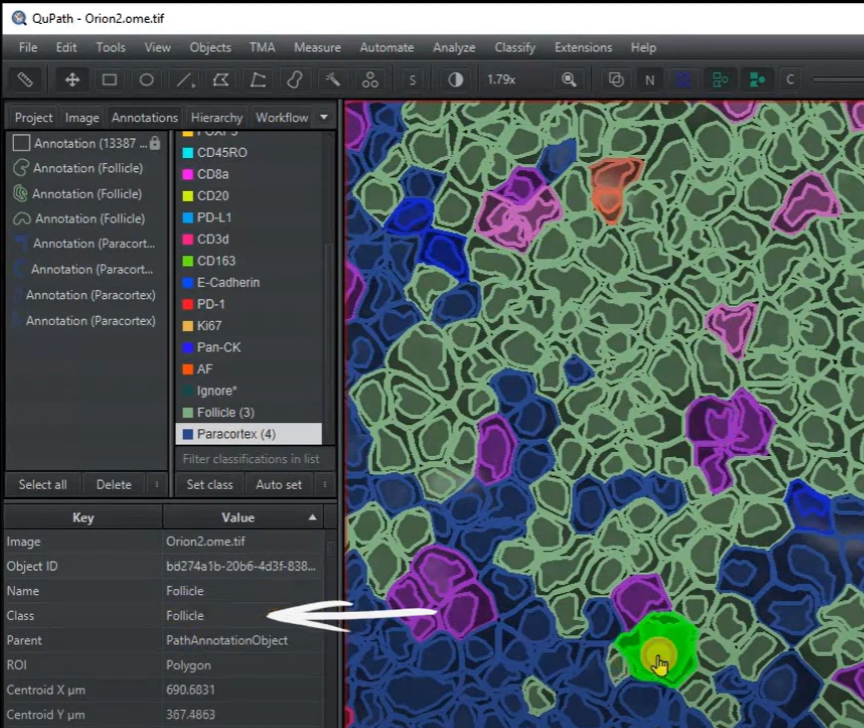Image Analysis
QuPath: Intro to scripting guide, and Analysis guides
2D user friendly image analysis software. Here you will find guides and discussion of analysis methods.
Scripting guides:
Start with an Intro to scripting in QuPath which explains the overall intent and gives access to a training project you can use to follow along and tinker with.
This *****quick reference guide ***** may also be helpful for commands you cannot quite remember. Also includes a map of data structures in QuPath like imageData, servers, and viewers!
Topics related to QuPath coding
Exporting images - Export whole slide images, binary masks, object count masks, overlays, and more
Future ideas:
Creating a GUI - and issues with a GUI
Exporting data (other than images)
Importing data
Forum posts
Use the link above to browse through a selection of useful posts from the Image.SC forum. If you know what you are looking for exists, this might be faster than hunting it down using the search function on the forum! Open to suggestions (or the removal of your post), just contact me using the button at the bottom of the page, or on the forum.
Includes:
-CytoMap
-Alignment
-System tests
-Complex scripts
Want to Support This Guide?
Or encourage me to write about a particular topic?
Generally, I will be expanding these sections, regardless of donations, as I have time.
I am not starving, this button was more created out of amusement and curiosity.
Analysis samples - QuPath
Sample Brightfield workflow, start to finish
- tissue detection, color deconvolution, pixel classifier, cell detection and machine learning classification, and exporting data.
All performed on subsections of the CMU-1.svs image.
Looking to start a multiplex project and interested in some advice/guidance?
Now with videos courtesy of Johanna M. Dela Cruz! See Creating a project, Visualization,
Regions of Interest/Annotations, Thresholding, Pixel classifiers, Cell detection, Classifying objects!
Under construction - more potential options!
Brightfield with more than two colors
TMAs
???
Here you may eventually find guides on CurveAlign, Imaris, Mastadon or other software I find I need to use. This is a growing page, so watch this space!
Imaris
While not open source, Imaris has been my window into 3D image analysis, and is a powerful tool for creating crisp visualizations of complex 3D/4D interactions.
More to come… maybe.




